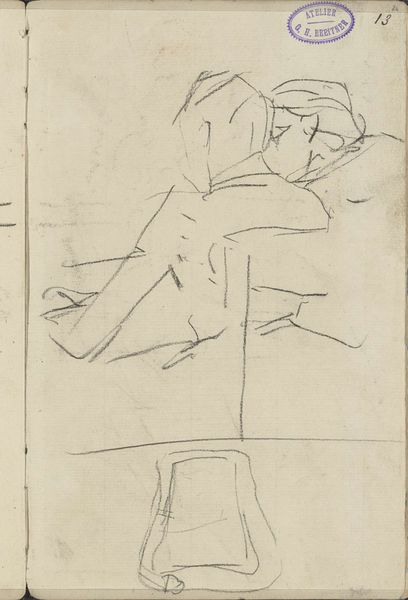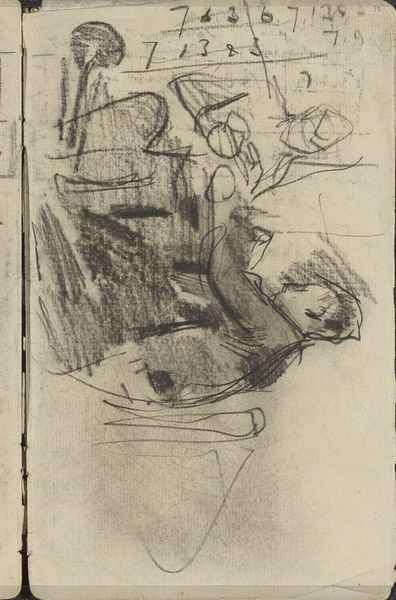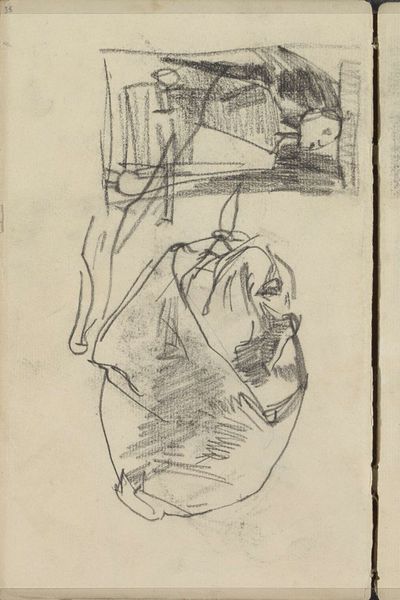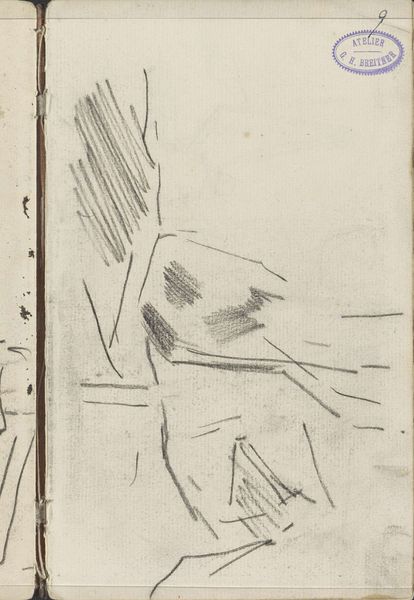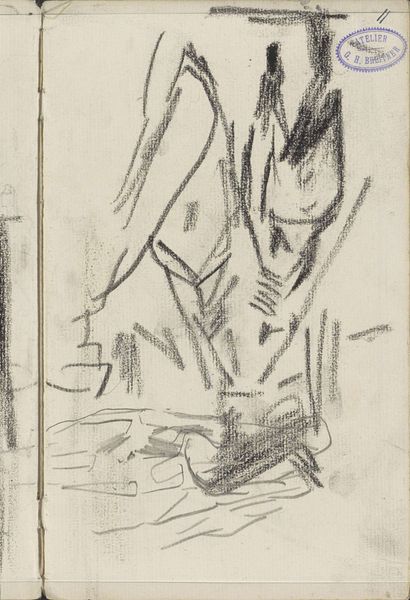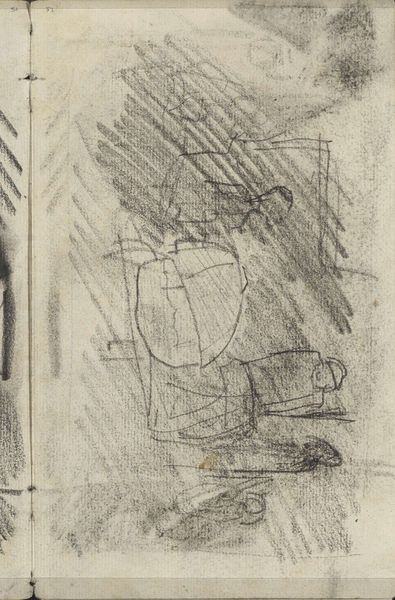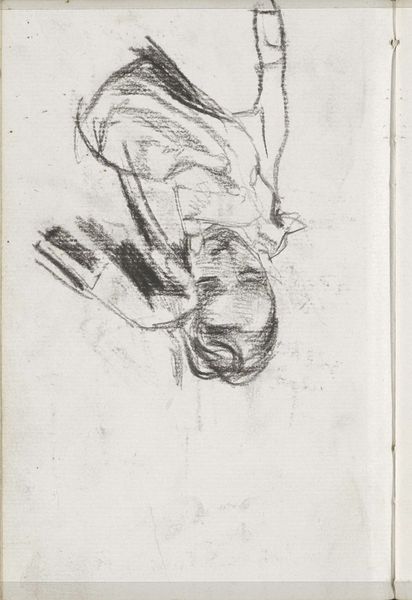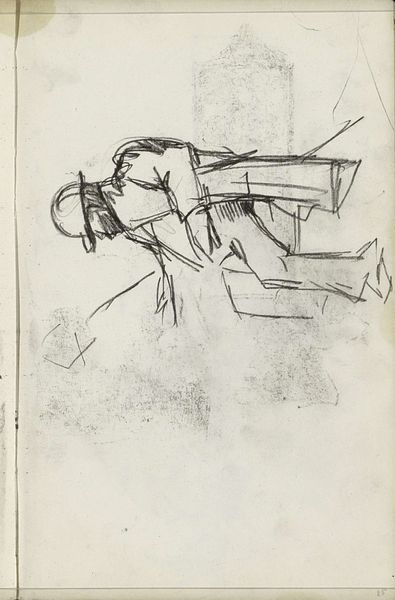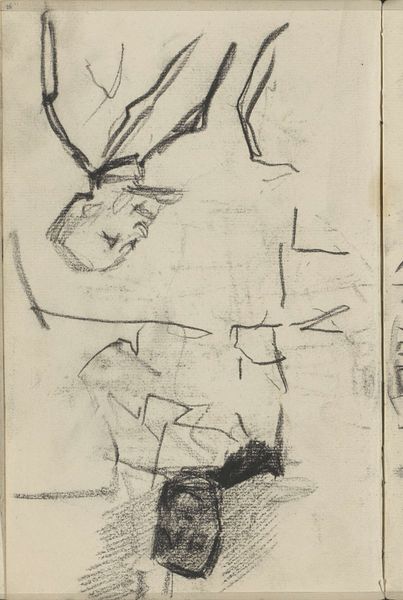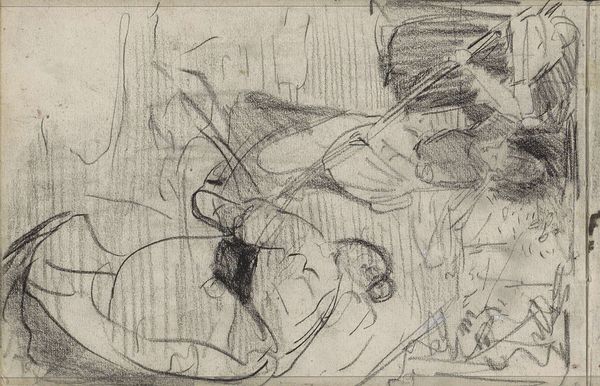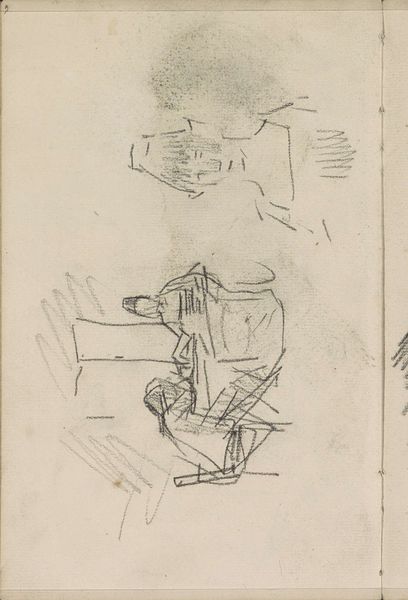
drawing, pencil
#
portrait
#
drawing
#
impressionism
#
figuration
#
pencil
#
realism
Copyright: Rijks Museum: Open Domain
Curator: Standing here at the Rijksmuseum, we have before us “Bukkende figuren,” or "Bending Figures," a pencil drawing possibly created between 1881 and 1885 by George Hendrik Breitner. Editor: Wow, there's an immediate raw intimacy here. It’s gestural, almost fleeting, but conveys such a physical vulnerability. It reminds me a little of the rough immediacy you see in Käthe Kollwitz’s sketches. Curator: Precisely. Breitner’s use of quick, expressive lines certainly captures a sense of immediacy. It's indicative of his Realist and Impressionist leanings, focusing on capturing a moment as he perceived it. But tell me more, what’s emerging for you symbolically in this rough sketch? Editor: Well, "bending" in itself suggests supplication, submission. The figures seem burdened, not just physically but perhaps emotionally, carrying something heavy, perhaps even trauma. The absence of detail kind of amplifies this—we don't know who they are or why they are bending. It’s universality emerges from the anonymity. What did figures bowing signify at this historical moment? Curator: Interesting perspective. Consider that, from an anthropological perspective, bending or bowing is a cross-cultural signifier. The gesture appears in rituals of mourning, displays of respect, or simple physical exhaustion. Breitner, deeply entrenched in the gritty realities of Amsterdam life, captures the working classes and lower strata of society, their everyday postures becoming unwittingly iconic for broader meanings and associations of the moment, and the present moment here with us in the museum. Editor: It makes me think of contemporary street photography, that sense of just capturing unposed realities… Breitner's just capturing that energy here. The eye of the observer finds so much resonance from simple shapes and shading alone. It feels, emotionally speaking, unfinished but ultimately complete. Curator: Yes! The sketch is ambiguous, inviting the viewer to actively participate in its completion. It reminds us that images and memories remain ever unfinished, always reforming, constantly shaping meaning anew as culture evolves. Editor: Well, I see Breitner’s bowing figures as a mirror reflecting our shared human burden. We bring the completion. Curator: Indeed, Breitner's figures remind us, each generation, how burdens can unify.
Comments
No comments
Be the first to comment and join the conversation on the ultimate creative platform.
